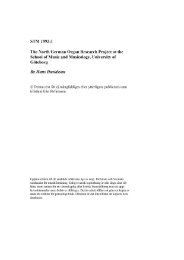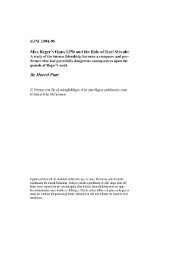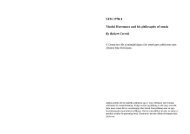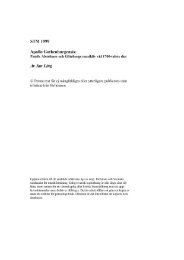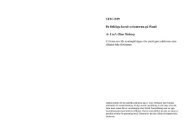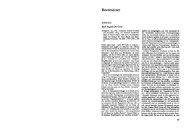Cajsa Lund - Svenska samfundet för musikforskning
Cajsa Lund - Svenska samfundet för musikforskning
Cajsa Lund - Svenska samfundet för musikforskning
You also want an ePaper? Increase the reach of your titles
YUMPU automatically turns print PDFs into web optimized ePapers that Google loves.
music as far back in time as possible. However, while ethnomusicology approaches early<br />
history from the present through a gradual retracing of continuous traditions, archaeology<br />
attempts to reach early history primarily by proceeding from artefacts. From the point<br />
of view of archaeomusicology, the above-mentioned aim could be tackled by means of<br />
the following, roughly outlined, stage-by-stage strategy:<br />
Stage 1. To secure a primary material of potential sound-producing devices, sufficiently<br />
comprehensive to provide a basis for significant further study.<br />
Stage 2. To evaluate and classify the primary material-geographically, chronologically,<br />
typologically, chorologically (i.e., its spread)-by means of theoretical as well as<br />
practical analyses.<br />
Stage 3. Interdisciplinary theoretical and practical analyses of larger find groups and find<br />
complexes.<br />
Stage 4. Integration of the archaeomusicological results with results from other research<br />
fields such as general archaeology, ethnomusicology, art history, religious history,<br />
linguistics, communication theory, dance research, etc.<br />
Such a model creates a theoretical structure which can never be followed in this order.<br />
It is thus intended only as a hypothetical work plan.<br />
At present, archaeomusicology in Scandinavia is dominated by the search for concrete<br />
evidence of ancient musical cultures, i.e. archaeomusicology is still essentially at stages<br />
1 and 2 of the above strategy.<br />
Our knowledge of music in ancient Scandinavia must be based on surviving musical<br />
instruments and other sound-producing devices. Other sources-but so far rare-are<br />
contemporary iconographic material and early written texts. Archaeological finds of mu-<br />
sical instruments/sound-producing devices are reached mainly by inventories of archaeolo-<br />
gical collections. Following upon inventory work in Sweden, Denmark and Norway,<br />
archaeomusicology can today account for some 1,200 prehistoric finds with sound-producing<br />
possibilities. The author classifies this material according to two systems: type classification<br />
-primarily according to the Sachs-Hornbostel system from 19 14-and probability<br />
grouping-which means that the finds are divided into five groups according to their<br />
potential for use as musical instruments/sound-producing devices. Group 1 is composed<br />
of artefacts which clearly have been used for producing sound, such as bronze lurs, bells,<br />
flutes with fingerholes, etc. The objects from groups 2-5 must be analysed to deter-<br />
mine which could have been used for sound-producing purposes. In evaluating the finds<br />
from groups 2-5, the author normally uses a specially devised combination of various<br />
theoretical and practical methods, including the scrutiny of archaeological data, analogy<br />
analyses, controlled practical and experimental trials with original finds or their copies/<br />
reconstructions, laboratory examination, etc. The author also traces sound-producing devices<br />
still in use (e.g. among children) which can be considered to have roots in ancient times.<br />
This ethnological research-new working methods are presented here-is carried out<br />
by the author in cooperation with professor Ernst Emsheimer, Stockholm, to whom the<br />
present article is dedicated.



